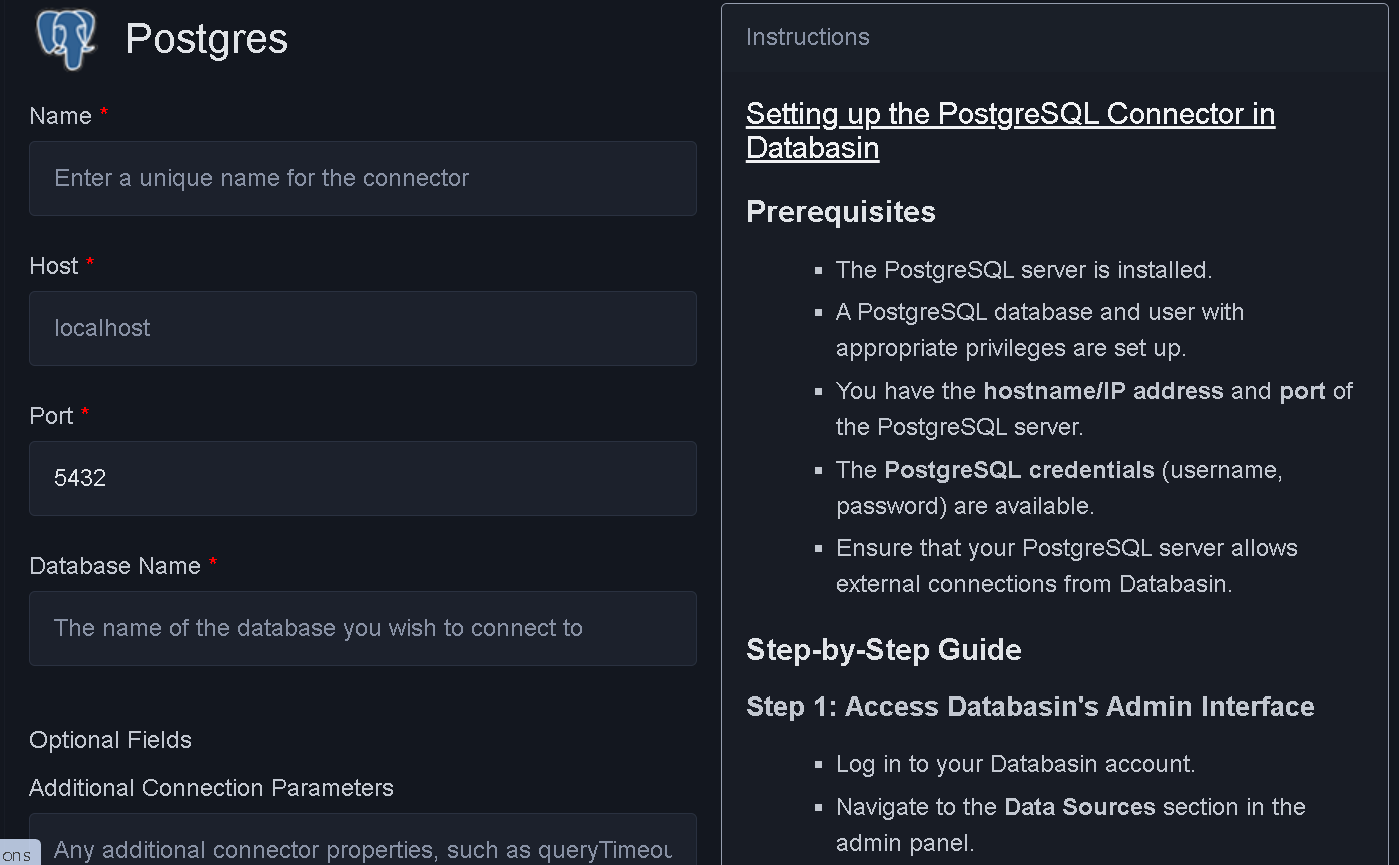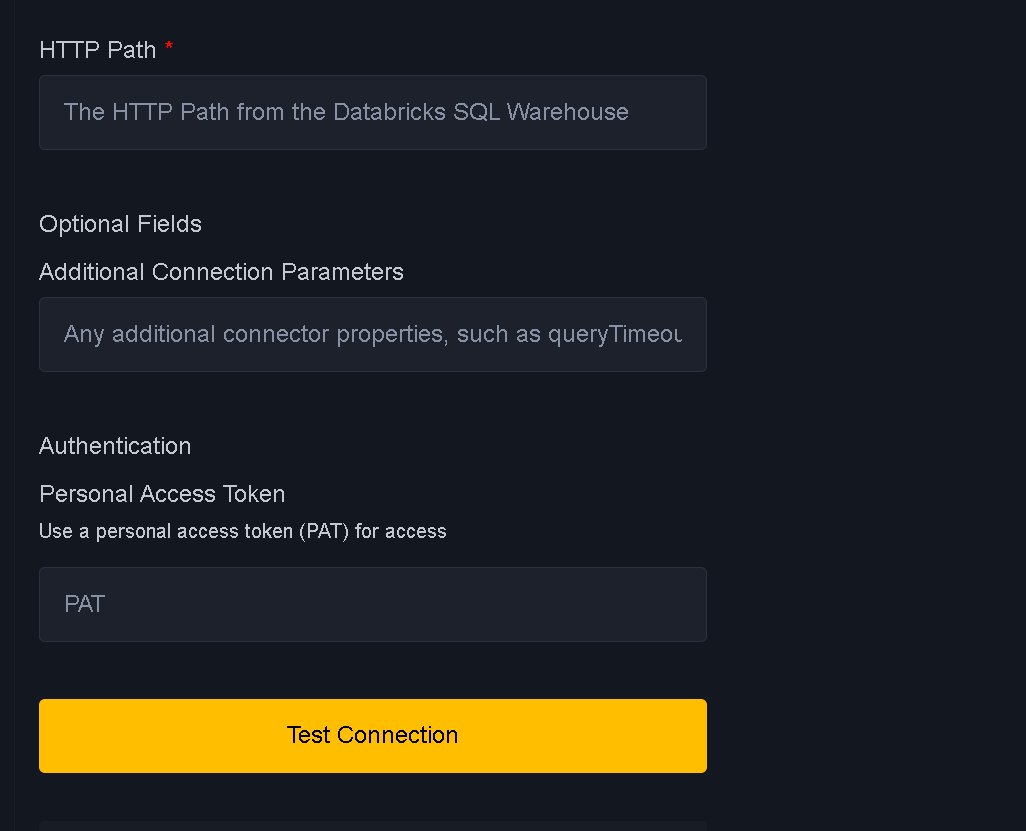Databasin (How to add Connectors)
This guide will show how to add connectors.
Connectors play important role in databasin. You can use connectors to connect to various supported platforms
You can see all the connectors supported currently in databasin.

Choose appropriate connectors for your project.
Creating Postgres Connectors
Choose postgres connectors to create a connectors with postgres db
Upon choosing you will see below form

Instructions For Setting up the PostgreSQL Connector in Databasin
Field Definitions to pay attention to:
Host - The hostname or IP address of the PostgreSQL server.
Port - The port for PostgreSQL (default is 5432).
Database Name - The name of the PostgreSQL database.
Username - The PostgreSQL user with privileges to the database.
Password - The password for the PostgreSQL user.
Connector Max Connections - The Max Connection decides how many connection will be allowed. This parameter is further decides in pipeline how many artifacts will run in parallel
Creating Databricks Connectors
Choose databricks connectors to create a connectors with databricks
Upon choosing you will see below form


Instructions For Setting up the Databricks Connector in Databasin
Field Definitions to pay attention to:
Host - The hostname or IP address of the databricks server. (adb-7423990253170059.19.azuredatabricks.net)
Port - The port for databricks (default is 5432).
Database Name - The name of the Catalog.
Storage Connector ID - The Storage Connector id. Use 34 for now
HTTP Path - The http path string. E.g "/sql/1.0/warehouses/f2bdb0e53bf4919b"
Additional Connection Parameters - Set timeout if needed
Authentication(Personal Access Token) - Use a personal access token (PAT) for access



